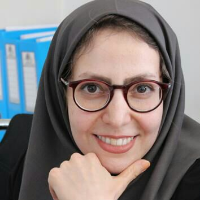Analysis of the Effect of the Event on the Creation of Collective Memory in Urban Space With Emphasis on the Reception Spaces of Different Socio-Religious Groups; Case Study: 30 Tir St., Tehran.
Understanding an urban environment is a mental process carried out through the relationship between man and his surrounding space. Human receives sensory messages from the environment and creates an image of the environment in his mind. One of the effective factors in the formation of this image is individual or collective memories of the environment. Memorable spaces are spaces that people have already experienced and are familiar with. The more familiar the spaces in the environment, the easier it is to communicate with. Finding familiar spaces will make you feel safe and calm in the environment. The lack of memory in the city is one characteristic of the generic city. This research paper aims to examine the impact of specific events on the promotion of collective memory in a given space. This research paper utilizes a qualitative approach, focusing on the case study of 30Tir Street. In measuring the event and memory, the data has been collected through the documentary method (referring to the available documents and sources, including books related to the events of each of the religions of Islam, Zoroastrianism, and Christianity, as well as national and international calendars) and interviews. During the analysis phase, the findings from documentary studies and quantitative documents were examined using Colaizzi's 7-step method. The next step will involve a qualitative method and inferential strategy. The target groups in the interviews were people of different religions. In general, a total of 16 Iranian Muslim respondents, 14 Armenian Christian respondents, and 9 Zoroastrian Iranian respondents participated in the evaluation process and the interview. Due to the lower percentage of Zoroastrian residents compared to other groups, the interviewed people in this group have a smaller number. This was why the number of interviewees differed. Due to time and communication constraints, access to the Jewish residents in the area was not feasible, leading to their exclusion from the research identification and analysis process. Theoretical saturation, in the answers, has been effective in determining the sample size, and the sampling method was based on the snowball method for the interviewees and the random method for the residents. The duration of the interview was about 30 to 45 minutes. Based on the results, the events that led to the creation of positive internal states in people and also have a rich historical origin are more probable and acceptable. In this definition, the cultural and historical roots of the event are important and therefore, religious differences in this phrase are not the priority. Also, events are more popular when they create pleasant and positive feelings in people. Therefore, events such as Norouz for Muslim Iranians and Zoroastrians and Christmas for Christian Armenians, which cause internal positive feelings, are the priority. The second priority is the events that are popular among the two groups. Zoroastrian and Muslim Iranians both welcome events that have a national origin. This issue has a rich historical origin, perhaps from the rich cultural roots and common events of ancient Iran for these two groups, and therefore the majority have a good feeling towards this group. A higher level of interpersonal integration is a common feature between Christian Armenians and Muslim Iranians. Finally, the factors that make the events popular in only one of these groups are the third priority of the characteristics of future events. Paying attention to both the private and public aspects is important for Muslim Iranians, given the significance of family, cultural restrictions, and the scale of the event. The religious significance of the event is primarily important only to the Christian group. It is notable that in most cases of Christian events, there is a greater emphasis on the religious or cultural origin of the event. Taking into account the attributes of events, such as time, intricacy, and scope, along with all the factors that can influence participant satisfaction or dissatisfaction, are crucial aspects of event management. In addition, considering the event-oriented category, strengthening the existing platforms and creating new platforms to increase the possibility of forming collective memories and considering the importance of the physical flexibility of these platforms, as well as preparing the minds of the public and providing accurate information for them about holding events, are some recommendations that can improve the collective memory in the case study as much as possible. Finally, attention to the multicultural nature of this street and considering the relationship between various socio-religious groups using 30-Tir Street can strengthen two main concepts of this research.
پرداخت حق اشتراک به معنای پذیرش "شرایط خدمات" پایگاه مگیران از سوی شماست.
اگر عضو مگیران هستید:
اگر مقاله ای از شما در مگیران نمایه شده، برای استفاده از اعتبار اهدایی سامانه نویسندگان با ایمیل منتشرشده ثبت نام کنید. ثبت نام
- حق عضویت دریافتی صرف حمایت از نشریات عضو و نگهداری، تکمیل و توسعه مگیران میشود.
- پرداخت حق اشتراک و دانلود مقالات اجازه بازنشر آن در سایر رسانههای چاپی و دیجیتال را به کاربر نمیدهد.



